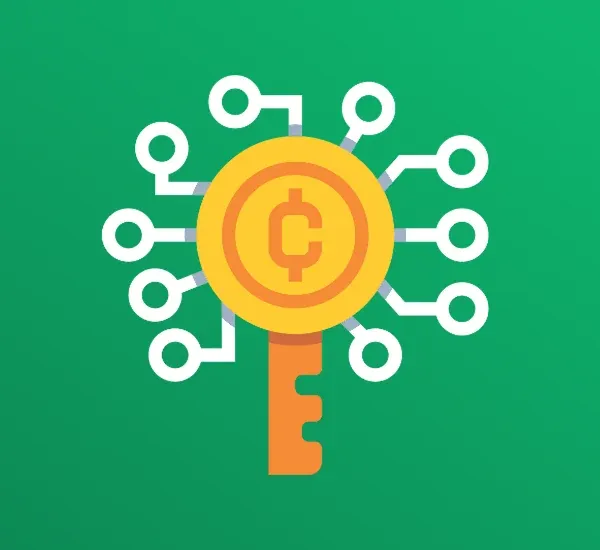What does a Crypto Token Unlock and Why Does It Breakdown Matter?
For Beginners

Why Token Unlocks Move Markets
Token unlocks are planned events where locked tokens — often held by early investors, team members, or ecosystem funds — become liquid. These schedules are public, tracked by the market, and almost always priced in ahead of time. But what matters is the context.
Markets don’t wait for unlocks to react. Positioning usually shifts days or even weeks in advance. Traders monitor who’s receiving tokens, what percentage of the total supply is being released, and whether that group has a history of selling. Liquidity providers adjust, sentiment shifts, and volatility clusters near the unlock window.
Some unlocks go unnoticed. Others trigger full breakdowns in structure. The difference often comes down to scale and timing: large unlocks during periods of weak demand hit harder. Add in a bearish trend or low volume, and even a mid-sized unlock can accelerate downside. The outcome depends entirely on how that new supply meets existing liquidity.
For funds and protocols, unlocks are moments of decision. Tokens can be sold, staked, used as collateral, or re-locked through governance. Each choice sends a different message. Some reinforce confidence. Others start a wave of exits. And since the unlock data is public, reactions tend to become reflexes.
Traders who track unlocks don’t chase headlines — they follow wallet behavior, vesting calendars, and early moves on-chain. Not every unlock is a sell-off. But each one is a checkpoint. And in a market where supply shocks still move price, that checkpoint matters more than most realize.

What Happens During a Token Unlock
When a token unlock hits, the supply curve shifts, and the market recalibrates. The new tokens appear on-chain, typically in wallets linked to early investors, project teams, foundations, or grant recipients. From that moment, those tokens can move, and the rest of the market starts watching.
Most unlocks follow a predefined vesting schedule. These can be cliffs (a lump sum released at once) or linear (distributed over time). The structure affects how pressure builds. A cliff often leads to concentrated risk. Linear schedules create constant overhang — slow, but persistent.
What matters next is behavior. Some wallets move funds immediately. Others sit idle. Traders track this in real time: how many tokens have hit exchanges, how many remain untouched, and whether wallets are consolidating or fragmenting holdings.
Here’s what usually unfolds around an unlock window:
- early investor or team wallets receive their allocation;
- on-chain activity spikes on the unlock day — even if no sales happen;
- centralized exchange deposits may rise within 24–48 hours;
- volatility increases, especially on low-liquidity pairs;
- sentiment shifts based on how recipients act — selling, staking, or holding;
- short-term traders front-run unlocks with speculative positions;
- protocols issue statements or updates to manage expectations.
Why Unlock Breakdowns Matter
When a token unlock hits the market and price action doesn’t align with expectations, traders take notice. A mismatch between projected and actual behavior often creates sharp moves because the reaction wasn’t priced correctly.
Breakdowns usually follow one of three paths:
- liquidity dries up before the unlock, and even small sell-offs cause outsized slippage;
- recipients move large volumes to exchanges, breaking the perceived hold strategy;
- community sentiment flips when team or VC wallets act earlier than expected.
These events are visible on-chain, and reactions build quickly. Even a clean unlock with no sell pressure can trigger fear if the optics suggest the opposite. Wallet merges, exchange deposits, or token reshuffling often set off cascading exits, especially in retail-heavy markets.
Breakdowns matter because they reset conviction. A project with strong fundamentals can lose momentum if the unlock cycle introduces uncertainty. Price often recovers, but positioning rarely does. Traders rotate out, volumes fade, and recovering trust becomes a longer game.
The impact of a breakdown isn’t limited to the chart. It affects governance participation, staking ratios, and ecosystem engagement. And once a community starts expecting future unlocks to behave the same way, that bias becomes hard to unwind.
How to Analyze a Token Unlock Before It Happens
The unlock calendar shows the date, but the decision to act comes from everything around it. Timing alone doesn’t explain how a market reacts. To read the unlock properly, you look at the structure behind it.
Start with the percentage of supply being released and compare it to what’s already circulating. A small float combined with a large unlock usually means higher impact. Next, review who’s receiving the tokens — not just names, but wallet behavior. If those addresses have a pattern of sending to exchanges or rotating out quickly, risk builds faster.
Unlocks often cluster around funding news, ecosystem updates, or marketing pushes. Sometimes that’s planned. Sometimes it’s a coincidence. Either way, those moments shape how new supply is absorbed.
Context matters more than charts. Thin books, low volume, or a shaky market mood create the conditions where even modest unlocks cause outsized moves. Traders who monitor flows — not headlines — usually move earlier. Wallet activity increases. Exchange deposits start to rise. Pricing shifts before most realize what’s happening.
By the time the unlock hits, the positioning is already set. What plays out next is just confirmation.

Positive Scenarios Around Token Unlocks
Not every token unlock creates downside pressure. In some setups, it supports market structure, improves liquidity, and reinforces confidence in the project. These cases don’t rely on sentiment — they reflect clean execution and predictable flow.
- Clear behavior from teams and funds
When the core team or early investors consistently hold, stake, or reallocate tokens without dumping, the market adapts. Wallets that show structured actions — like gradual distribution, on-chain staking, or treasury reallocation — create a visible baseline. Over time, that consistency builds trust. Traders stop expecting a selloff if history shows measured behavior.
- Unlock paired with utility upgrades
If an unlock coincides with a product launch, ecosystem expansion, or new staking mechanism, it reframes the event. Tokens entering circulation have a direct use.
- Recipients are ecosystem participants
When the majority of unlocked tokens go to contributors, DAOs, or builders, the flow stays inside the protocol. Instead of hitting open markets, tokens move into governance, LP incentives, validator nodes, or grant systems. That internal rotation limits volatility and shows alignment between incentives and network growth.
- Unlock follows a long period of illiquidity
In some cases, the circulating supply is so thin that the token price becomes artificially reactive to small orders. A controlled unlock can add depth to books and reduce slippage, especially if it brings in tokens that were already expected but just not available.
- Market conditions are strong
When the overall trend, volume, and risk appetite support inflows, the market can absorb new supply without disruption. If buyers are already stepping in, the unlock becomes just another rotation point. Volatility may spike intraday, but the structure holds. In these cases, price sometimes moves up, not despite the unlock, but because it brings clarity and removes the overhang.
Each of these scenarios reflects a different kind of unlock — one that’s anticipated, integrated, and aligned with network activity.
What Traders and Projects Do with Unlocks
Token unlocks are scheduled, but the market response is anything but automatic. Some traders front-run them. Others ignore them. Teams either prepare for them or let the narrative spiral out of their hands. That divergence is what gives unlocks their weight: the same mechanics can produce wildly different outcomes depending on what follows.
On the trader side, unlock events often signal opportunity, not because the price always drops, but because volatility increases. Traders track key wallets, follow fund flows, and use tools to monitor movement in real time. Many avoid taking positions near unlock dates unless volume supports it. Others lean in, shorting illiquid unlocks or rotating capital into protocols with cleaner schedules.
Short-term plays often center around three types of setups:
- pre-positioning based on expected selling (especially if the unlock size is large relative to the float);
- watching early movement from investor or team wallets;
- capitalizing on market overreaction, especially after the unlock finishes cleanly and no major dumps occur.
In each case, success comes from timing and execution, not from assuming a specific price direction.
From the project side, the unlock is usually a stress point, internally and externally. A good team doesn’t just release tokens and hope for the best. They plan narratives, adjust incentives, and often shift token utility to soften the impact.
The most prepared protocols use unlocks to:
- onboard new governance participants;
- migrate tokens into new staking or locking contracts;
- align ecosystem grants and LP incentives with fresh supply;
- communicate roadmap updates timed to the unlock cycle.
The goal is to keep supply expansion tied to network participation. If new tokens serve a function — governance, security, liquidity — the unlock becomes infrastructure, not noise.
But when projects go silent or fail to contextualize a major unlock, sentiment breaks quickly. Even a responsible release can create long-term damage if the community perceives it as mismanaged or opaque. And once that perception sets in, future unlocks carry more weight, whether the risk is real or not.
Unlocks don’t just release tokens. They reveal whether a protocol is built to handle its schedule, or whether it’s still playing catch-up.

Unlock Patterns That Keep Repeating
Unlock events over the past 18 months have followed familiar mechanics, but the reactions haven’t always matched. The outcomes depended less on supply size and more on liquidity conditions, wallet behavior, and how well the moment was prepared for.
One of the most common setups in 2024–2025 has been the low-volume unlock. Even a modest release creates an outsized impact when order books are thin. Traders don’t wait for actual selling — they respond to signals: exchange transfers, coordinated wallet movement, or complete silence from the team at the wrong time.
Another frequent pattern involves unlocks that follow sharp rallies. Tokens distributed at early valuations enter the market after 5–10x gains. That’s all it takes. Recipients secure profits, and the rest of the market follows. The liquidity window opens, and hesitation disappears.
Some setups land cleanly, especially when the unlock aligns with ecosystem growth. If the tokens serve an immediate role in staking, governance, or rewards, the shift feels productive. Wallets stake instead of selling. Traders position for continuity, not exit. Volatility still appears — but doesn’t escalate.
Where Projects Still Slip
Not all unlocks go wrong because of selling. Some lose ground due to poor visibility. One of the clearest breakdown patterns in this cycle has been a lack of communication. No statements. No signals. No clarity around wallet movements. Even if nothing negative happens on-chain, the market reacts to the vacuum.
Pre-sold or OTC-managed unlocks, by contrast, rarely create disruption. The distribution already happened. The funds were prepared. Wallets stay still. No announcements are needed because the design removes the need for reaction.
But when a team says nothing during a major unlock, the market fills in the blanks, usually with exit scenarios. That loss of trust compounds. Future unlocks from the same project start from a worse position, regardless of mechanics. Traders remember the silence more than the numbers.
Conclusion
Token unlocks mark real shifts in market structure. They create optionality, adjust expectations, and often reshape short-term positioning. The impact doesn’t come from the release itself — it builds through how the market prepares, responds, and recalibrates around that moment.
When traders follow unlocks in context — tracking wallet flows, monitoring sentiment, watching how liquidity evolves — the signal becomes actionable. It’s not about prediction. It’s about recognizing pressure points before they show up in price.
For projects, unlocks reveal more than tokenomics. They test how well a team manages timing, trust, and transparency. Those that approach the process with structure tend to reinforce confidence, while those that stay silent often invite doubt, even if the unlock is clean on paper.
Handled right, unlocks don’t just pass. They become part of how a project proves it’s built to scale.


